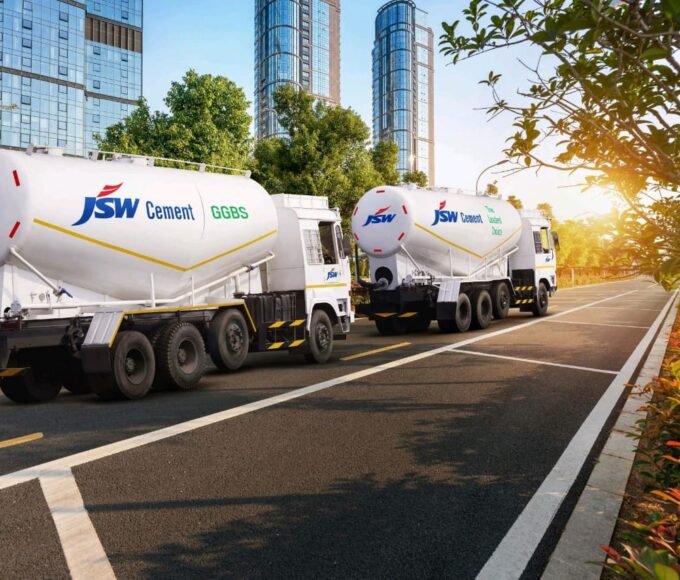Recent Posts
India’s Construction Labour Crisis, The story Behind the Shortage

India’s Construction Labour Crisis, The Story Behind the Shortage
India’s construction industry is growing at a rapid pace, adding 9% to the country’s GDP and expected to hit a massive $1.4 trillion by 2025. But there’s a big problem—labour shortages. Last month, L&T Chairman N. Subrahmanyan said that some workers are unwilling to relocate because welfare schemes provide them financial security. But is that really the reason? The truth is much deeper.
What Construction Workers Really Face?
Imagine leaving your home, traveling hundreds of kilometers for work, only to struggle with job security, harsh conditions, and delayed wages. This is the reality for millions of migrant construction workers in India. They move from state to state, yet their access to government benefits remains uncertain.
In theory, the Building and Other Construction Workers (BOCW) Act should protect them. But in reality, it’s full of roadblocks. To qualify for welfare benefits, workers need multiple documents—proof of identity, residence, and an employment certificate proving they’ve worked 90 days in a year. Sounds simple? Not for workers who frequently shift jobs and locations. Many don’t have fixed addresses or the right paperwork, making them ineligible for the very benefits meant for them.
And even if they do manage to register, there’s another catch—benefits aren’t portable. If a worker registers in Tamil Nadu but moves to Maharashtra for a job, their registration doesn’t carry over. They have to start the process all over again, discouraging many from even trying.

The ₹70,000 Crore Question: Where Is the Money?
The government collects a 1-2% construction cess to support these workers. Over ₹70,000 crore has been set aside, yet a shocking 75% remains unused. Why? Bureaucratic red tape, slow verification processes, and poor coordination between states prevent funds from reaching workers.
When extreme weather or pollution-related bans halt construction work, thousands of workers lose their incomes overnight. They turn to government relief funds—only to face long delays and endless paperwork. With no proper digital system in place, these workers are left struggling to survive.
How Can We Fix This?
If India truly wants to solve its labour crisis, real changes need to happen:
1. A National Labour ID – Just like the One Nation One Ration Card scheme, workers should have a single ID that allows them to access benefits no matter where they move. Linking BOCW registrations to e-Shram can make this a reality.
2. Digitizing Welfare Access – A single online platform with Aadhaar-based verification can speed up registrations and reduce corruption. Workers should be able to apply and track benefits with ease.
3. Simplifying Documentation – The government should accept alternative proofs and set up on-site registration camps at construction sites. This would reduce employer dependency and make the process faster.
4. Better Pay, Skilling, and Conditions – If the industry invests in worker training, offers better wages, and improves job conditions, workers will be more likely to stay.
The Bottom Line
Blaming welfare schemes for labour shortages misses the bigger picture. The real issue is a broken system that fails the very people building India’s future. If we truly want to fix this, we need action—not excuses.
Follow Build Watch News for more updates on India’s construction industry!
- BOCW Act
- Buildwatchnews
- construction cess utilization
- construction industry growth
- construction jobs India
- construction labour
- construction welfare schemes
- construction workers rights
- digital welfare access
- e-Shram for construction
- government welfare for workers
- India construction crisis
- India construction workers
- India labour migration
- India’s real estate workforce
- L&T labour shortage
- labour laws India
- labour shortage in India
- labour shortage solutions
- migrant workers India
- skill development in construction
- unutilized welfare funds
- worker benefits India
- worker documentation issues
- worker safety in India
Recent Posts
Categories
- Acquisition1
- Airport16
- AP103
- Apartments126
- Bengaluru217
- Budget 202521
- Cement165
- Chennai438
- Construction909
- Construction Material Price Updates1
- Corporation4
- CREDAI61
- Editors Pick42
- Equipment45
- Events11
- Export24
- GST17
- Highways118
- Hotel16
- Housing207
- Hyderabad94
- import26
- India122
- Industrial387
- Infrastructure616
- Interiors28
- Iron Ore59
- Karnataka92
- Kerala56
- Labour1
- Land150
- Logistics40
- Market Updates404
- Metal100
- Metro109
- Mining77
- MSME21
- News1,877
- NHAI96
- Office Space2
- Paints39
- Port1
- Power Shutdown1
- Properties112
- Puducherry12
- Railways8
- Real Estate762
- Road222
- Sand38
- Short News117
- SIPCOT14
- Steel Daily429
- Stocks37
- Tamil Nadu458
- Technology81
- Telangana96
- TIDCO9
- Trade52
- Trending News1,111
- Video2
- warehouse42
Related Articles
Modulus Housing Secures ₹70 Crore Funding to Accelerate Market Expansion and Technology Innovation
IIT Madras-incubated Modulus Housing has secured about ₹70 crore in Series A...
BySamrita JosephDecember 6, 2025JPMorgan Expands Its India GCC Presence with Major Office Lease in Hyderabad
JPMorgan Chase has strengthened its India footprint by leasing 1.76 lakh sq...
BySamrita JosephDecember 6, 2025RBI Rate Cut Brings Timely Relief and Boosts Confidence Across India’s Housing Market
The RBI’s rate cut has lifted market sentiment and improved affordability for...
BySamrita JosephDecember 6, 2025JSW Cement Unveils ₹11000 Crore Expansion Plan to Boost Production Capacity to 41 Million Tonnes
JSW Cement has announced a major ₹11000 crore expansion plan to increase...
BySamrita JosephDecember 6, 2025















Leave a comment